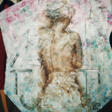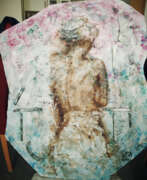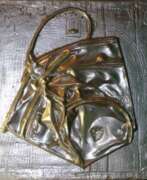Concrete art

Concrete art
Concrete art, an art movement emphasizing geometrical abstraction, originated in the early 20th century, heralded by figures like Theo van Doesburg and Max Bill. This art form, notably defined in van Doesburg's "The Basis of Concrete Art," marked a transition from traditional artistic concepts to a style that prioritized pure abstraction and geometric precision. Van Doesburg, a Dutch artist, was integral in shaping the movement, blending his experience in painting, writing, and architecture to champion a style that strived for a higher spiritual level in art, beyond mere visual representation.
Max Bill, a pivotal figure in concrete art, was known for his explorations of geometrical principles in art, exemplified in his series "Fifteen Variations on a Single Theme." Bill's work reflected a blend of mathematical logic and aesthetic appeal, pushing the boundaries of color and form. His "Endless Ribbon" sculpture, a representation of the Möbius strip concept, is a testament to the movement's embrace of mathematical and scientific ideas.
Concrete art's international impact was significant, with groups like the Groupe Espace in France and movements in Latin America extending its influence. The movement's evolution saw a distinction between 'cold abstraction' (geometric concrete art) and 'warm abstraction' (lyrical abstraction), with the former leading to developments in optical art, kinetic art, and programmatic art. Notably, the movement's principles were not confined to painting but also extended to sculpture, photography, and even poetry, as seen in the works of artists like Josef Linschinger and Reinhard Roy.
Despite its rigid and self-centered nature, which sometimes limited audience engagement, concrete art continued to evolve and influence various artistic domains, including minimal, conceptual, and geometrical abstract art. It remains a critical chapter in the history of art, offering a unique perspective on the relationship between artistic expression and mathematical and scientific principles.
If you're intrigued by the rich history and evolving nature of Concrete art, and wish to stay informed about the latest developments, product sales, and auction events related to this fascinating art movement, consider subscribing to our updates.
| Country: | Argentina, Cuba, Czech Republic, Denmark, Europe, France, Germany, Italy, South America, Spain, Switzerland, The Netherlands, Uruguay |
|---|---|
| Start of the period: | 1930 |


